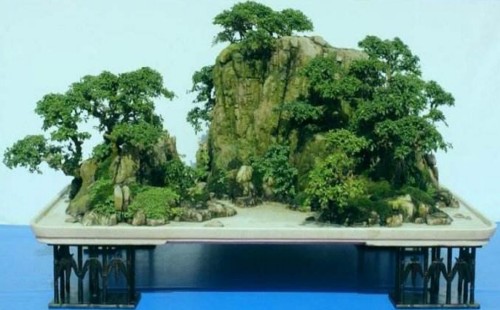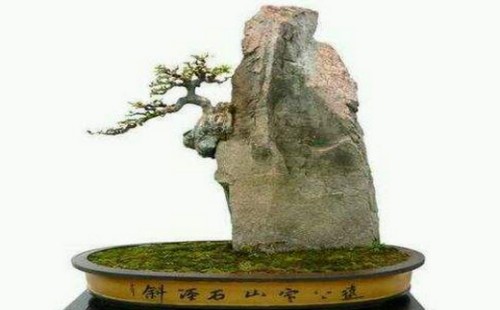How to make semi-stone bonsai
Stone-attached bonsai is a bonsai display form that integrates plants and stones. Usually, stone-attached bonsai can be divided into two forms: full stone-attached and semi-stone-attached. The fully attached stone is that the roots are all attached to the stone, while the semi-attached stone is that the roots only hold the stone to grow. The production technology and difficulty of full-attached stone bonsai is often slightly simpler than that of semi-attached stone, but although the production of semi-attached stone bonsai is slightly more difficult, its ornamental value is often higher, which can better reflect the wonderful and perfect effect of stone attachment. So, how to make semi-stone bonsai?
Before we start making stone-attached bonsai, we all need to prepare all possible tools and materials in advance, and we can't start making them until all the preparations are ready. Next, let's take a look at the methods and steps of making semi-stone bonsai. The editor illustrates this process for you, hoping to help you better understand and learn from it.
The first step: first of all, dig out the selected seedlings, and clean up all the soil adhered to the roots, and generally prepare multiple seedlings for backup.
Step 2: attach the roots of the cleaned saplings to the stone, then use wire and wrap it around the sapling and the stone with a tool. However, in order to prevent the saplings from blocking the stone and affect the ornamental effect, the saplings are generally tied to the back of the stone.
Step 3: if the root system of the seedling is too long, or even extends beyond the bottom of the stone, then we need to use scissors to cut off the excess root system. Generally cut off the part that is more than 1 cm away from the bottom of the stone.
Step 4: spread a layer of barbed wire at the bottom of the flowerpot with holes below, and use the original wire to pass through the barbed wire through the holes in the bottom of the flowerpot. Wire and barbed wire are used to fix the whole of the saplings and stones that were previously tied up.
Step 5: spread some granular media on the barbed wire in the basin, because the flowerpot is relatively shallow, so the particles used should also be smaller, often more appropriate.
Step 6: put the bundled saplings and stones on the granular medium in the basin, probably in the middle.
Step 7: use the wire that passes through the bottom of the basin to secure the unity of the stone and the sapling. Pay attention to the use of wire cutters and other tools to twist and fix, freehand operation is not only difficult to fix, but also easy to scratch fingers.
Step 8: after fixing the stone and sapling in the basin, cover the basin with a layer of granular medium or other basin soil, mainly to bury the root system of the seedling in the soil, which is more conducive to its growth. However, the depth of covering the matrix should not be too much, otherwise it will affect the viewing. And even if the root system on the back of the stone is exposed, it often doesn't matter.
After the completion of the above work, the production process of semi-attached stone bonsai is also basically completed, and the next thing we need to do is maintenance and management.
Time: 2019-06-03 Click:
- Prev

The step of making landscape bonsai-fishing on the river alone in the cold
Landscape bonsai can be built outdoors for viewing or indoor for tasting, but before making it, we must make clear what the theme of creation is, and then conceive it according to the preliminary artistic effect. and then choose materials such as stones, plants and even accessories.
- Next

How to fix the stone with stone bonsai
Stone bonsai is a perfect integration of stone and plant science. As a form of expression of potted plants, it can not only reflect the natural style, but also create a sense of beauty through integration. On the other hand, the stone bonsai is usually planted on the stone, mainly through the root system of the plant to grasp the stone wall.
Related
- Fuxing push coffee new agricultural production and marketing class: lack of small-scale processing plants
- Jujube rice field leisure farm deep ploughing Yilan for five years to create a space for organic food and play
- Nongyu Farm-A trial of organic papaya for brave women with advanced technology
- Four points for attention in the prevention and control of diseases and insect pests of edible fungi
- How to add nutrient solution to Edible Fungi
- Is there any good way to control edible fungus mites?
- Open Inoculation Technology of Edible Fungi
- Is there any clever way to use fertilizer for edible fungus in winter?
- What agents are used to kill the pathogens of edible fungi in the mushroom shed?
- Rapid drying of Edible Fungi

